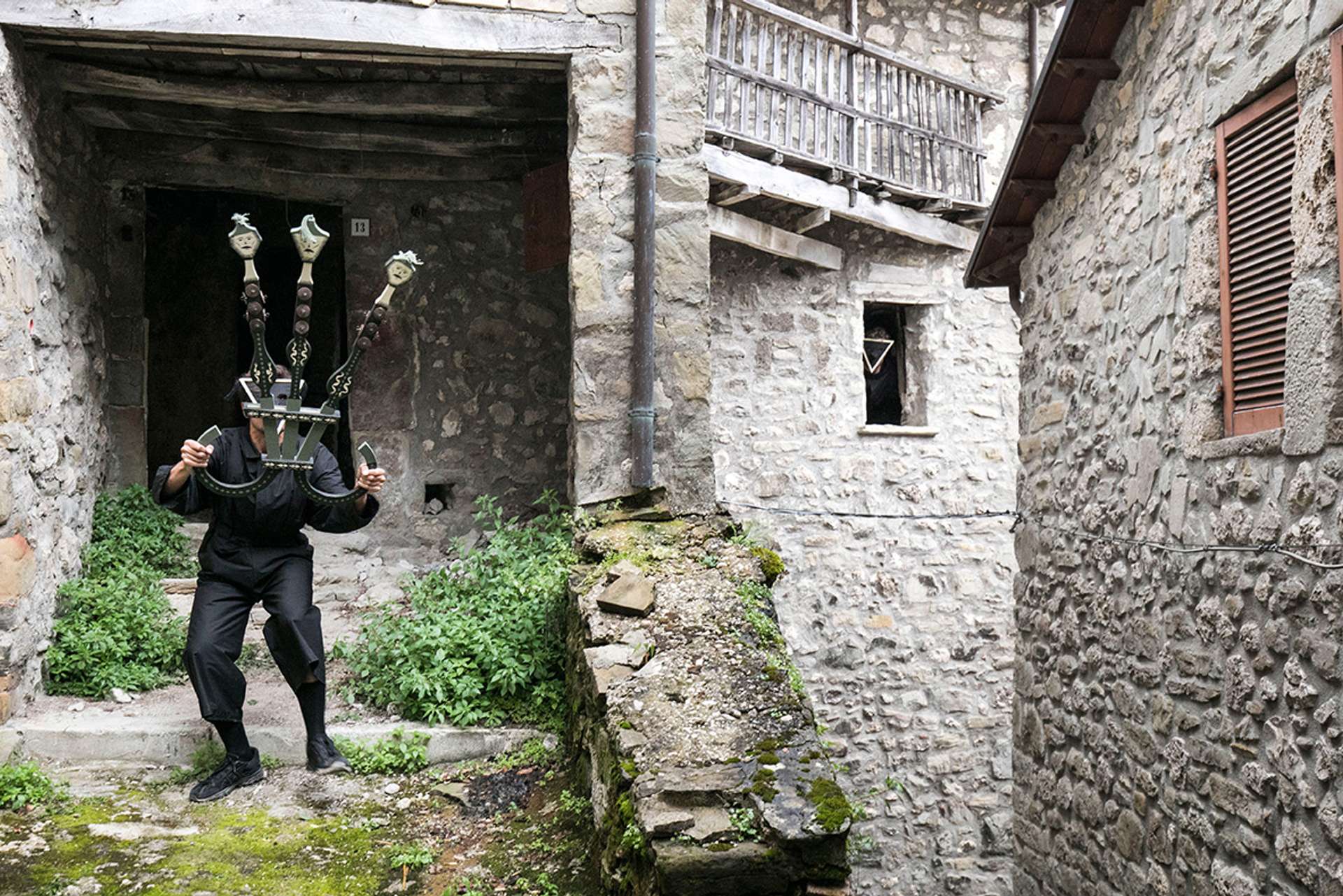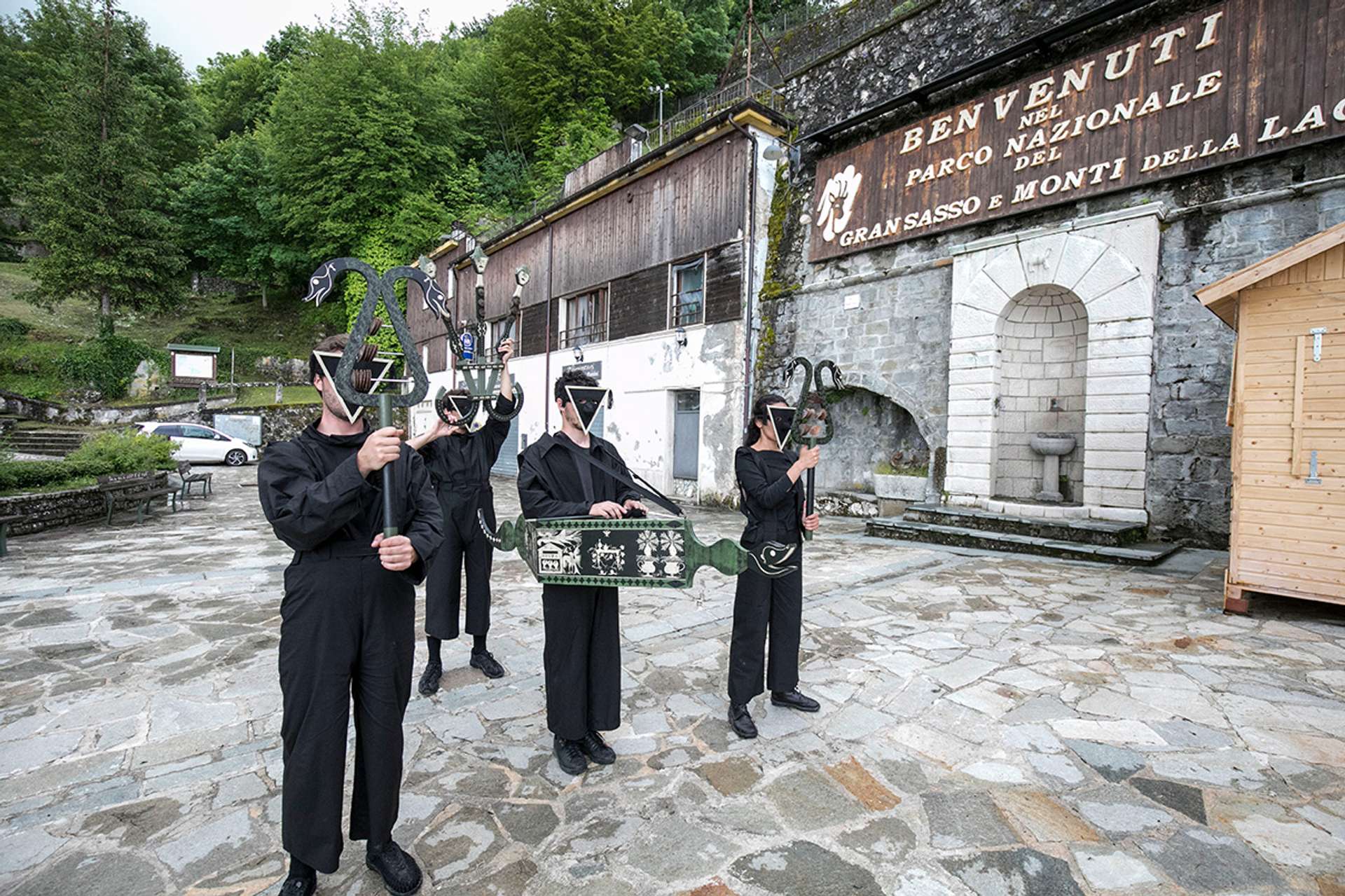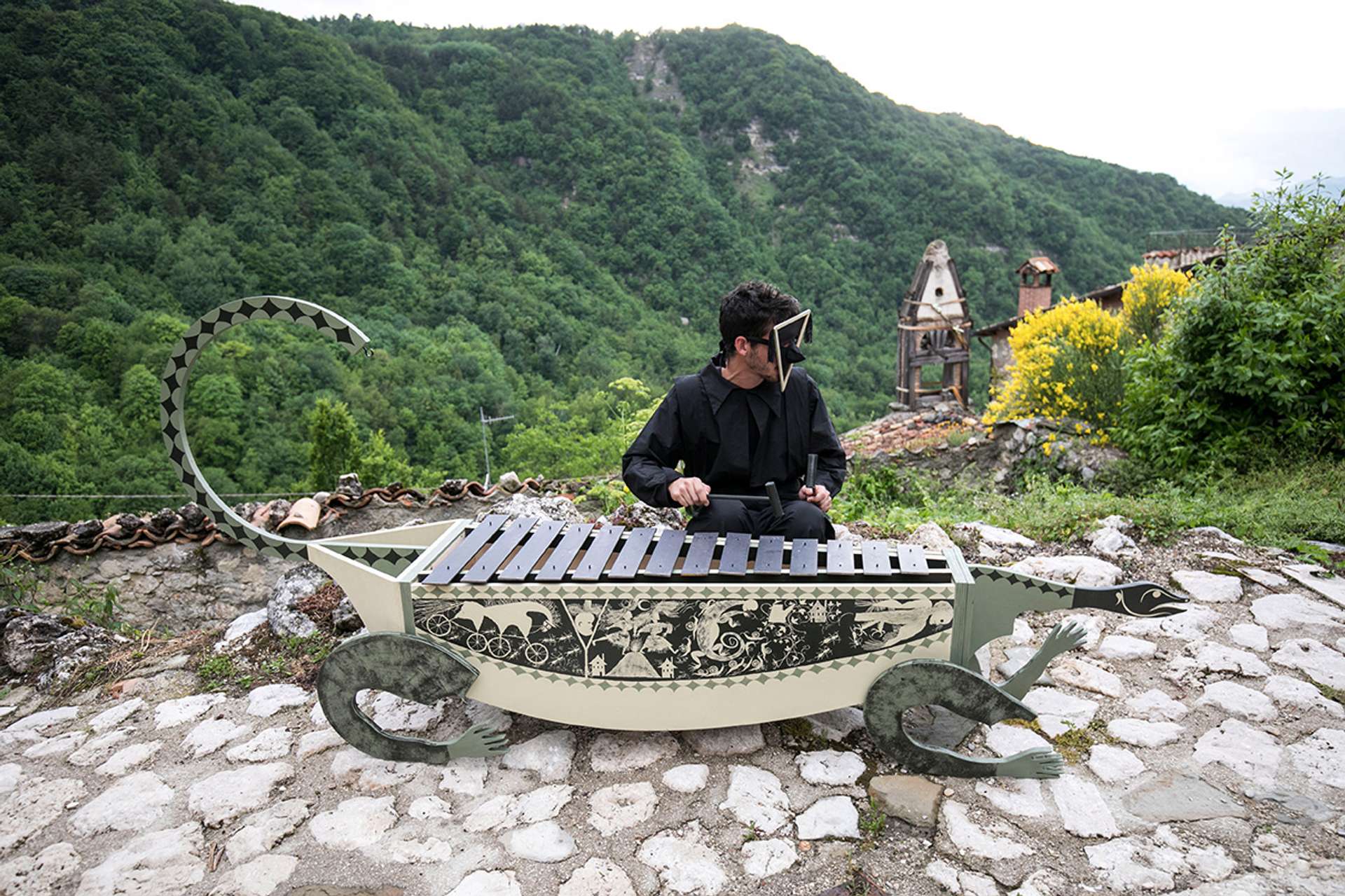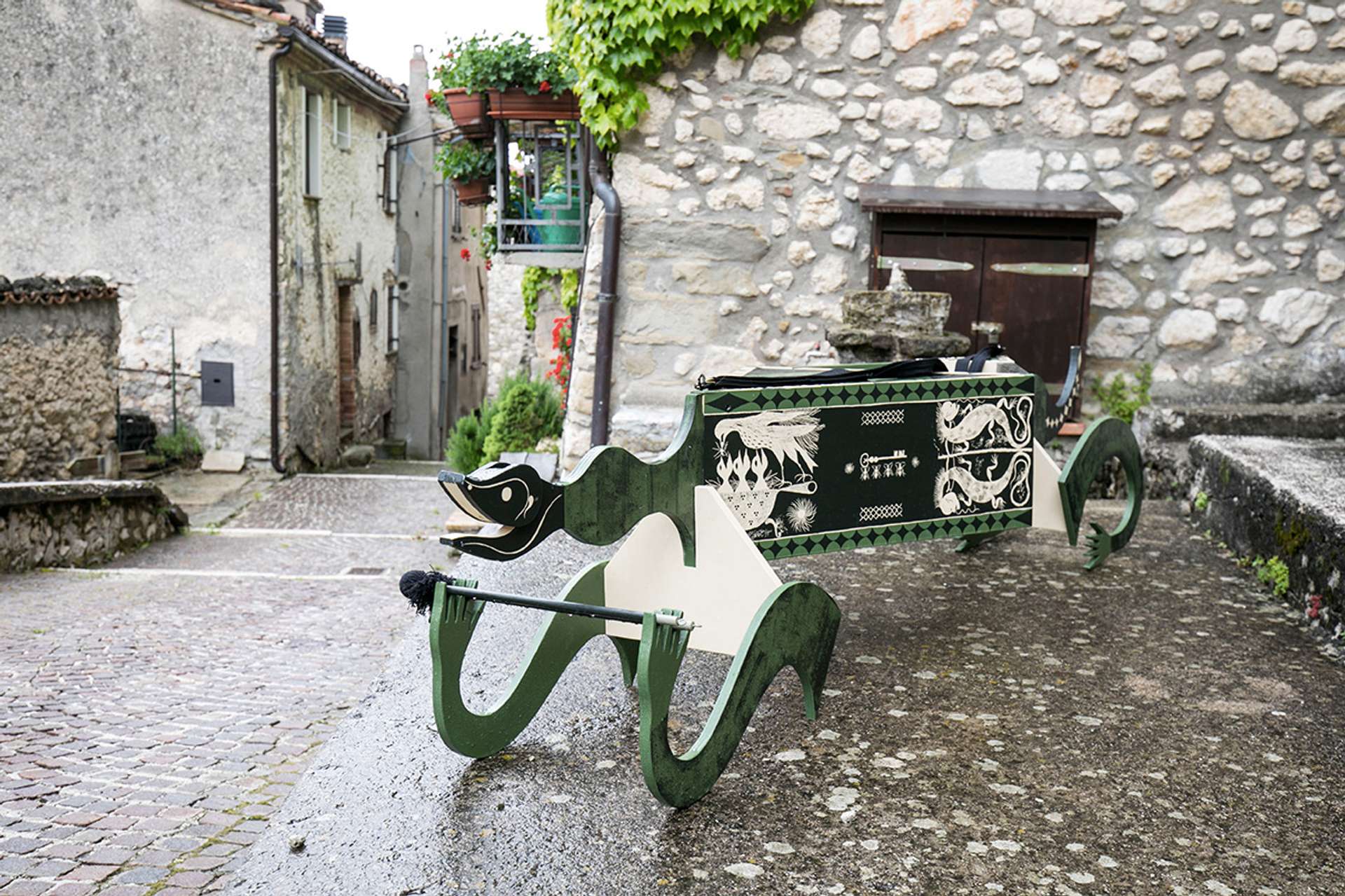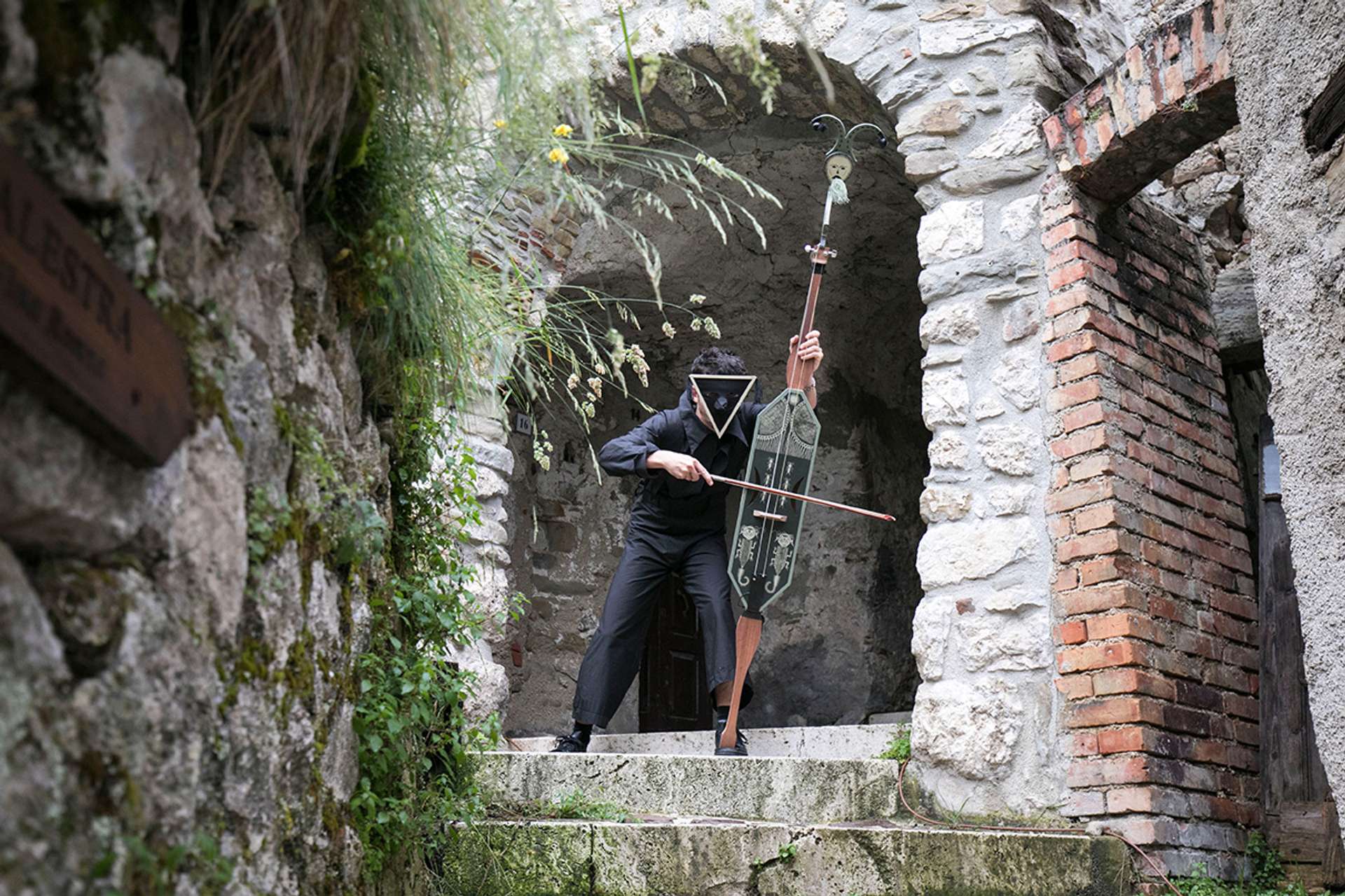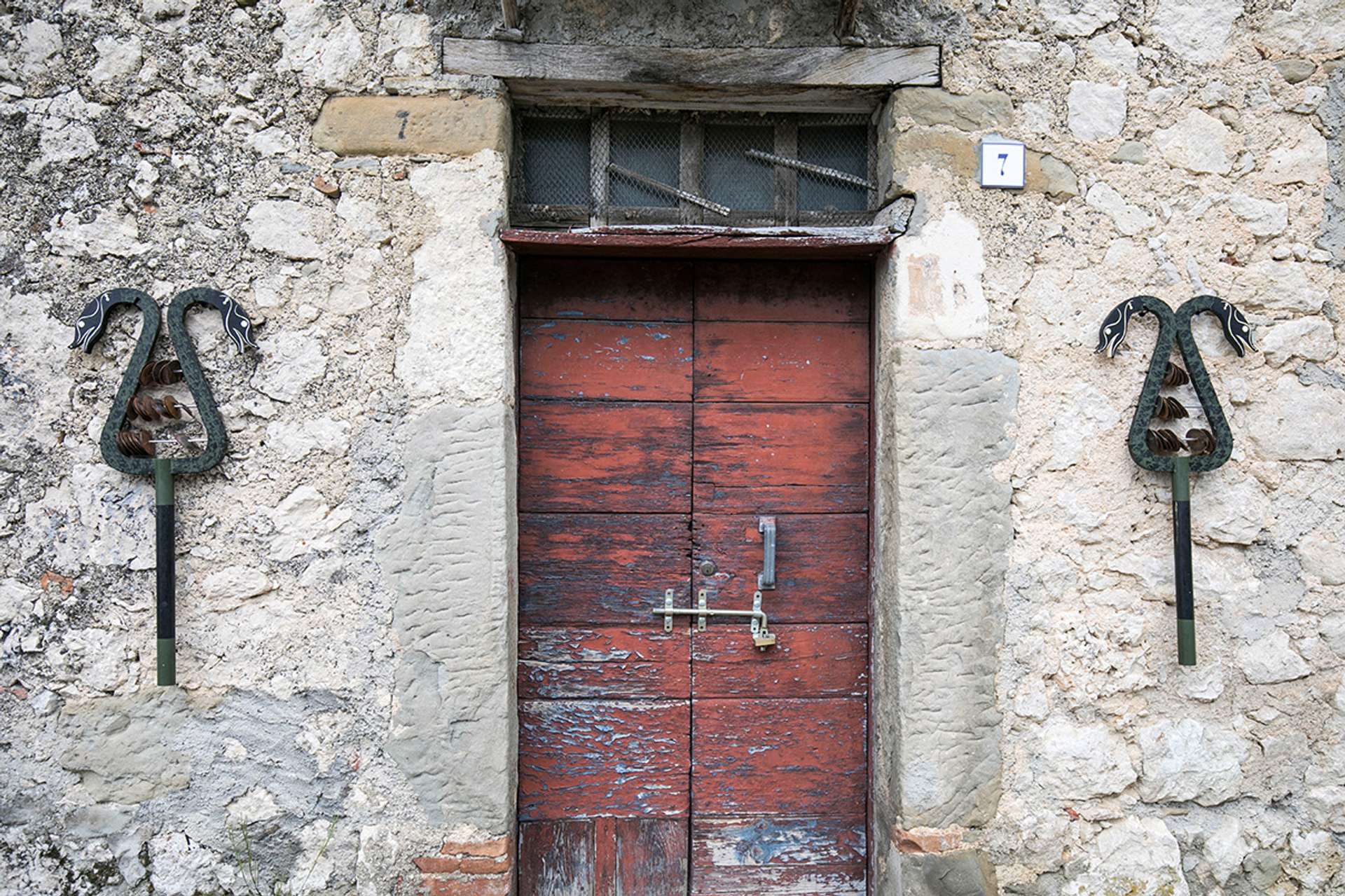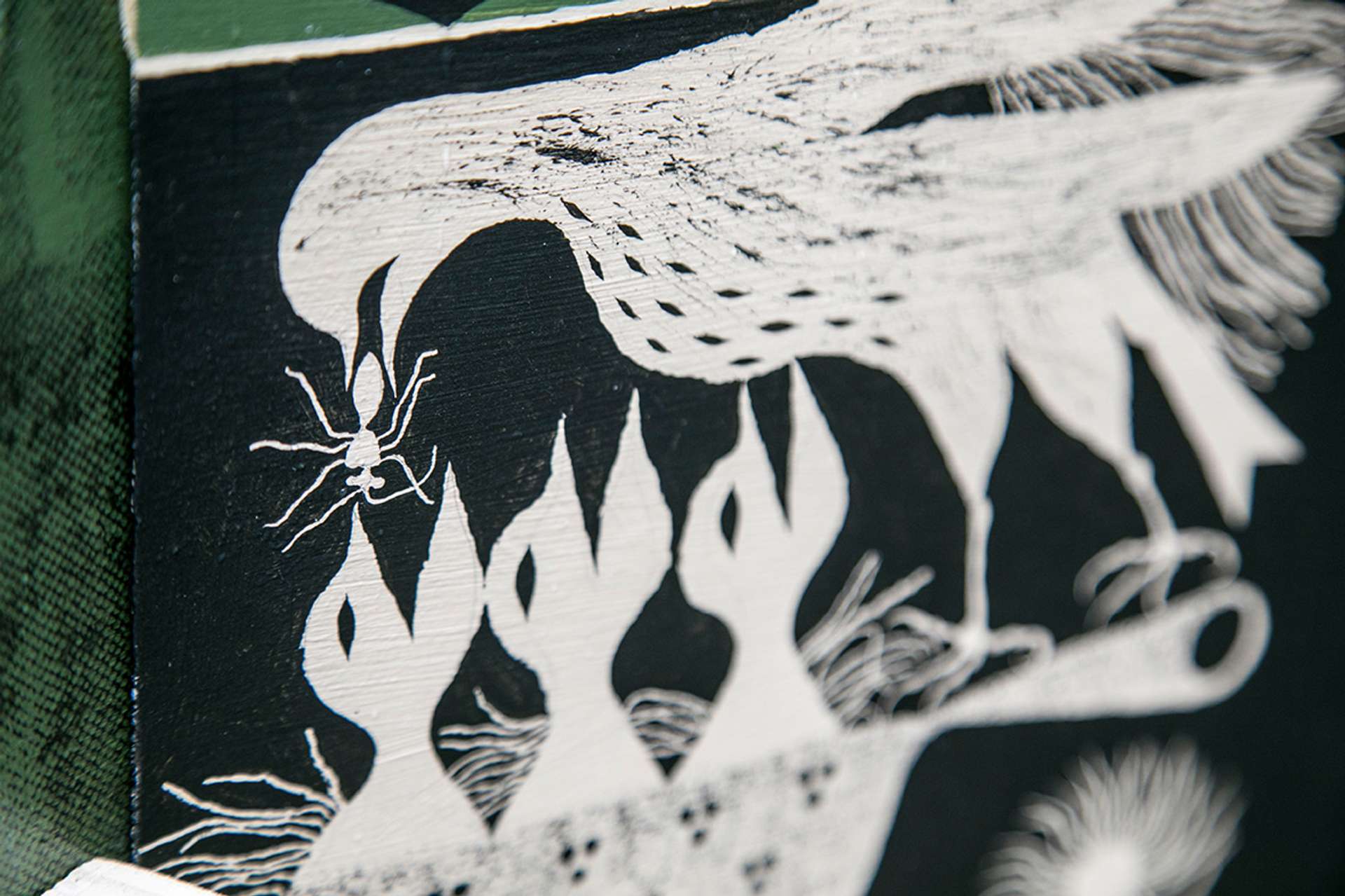Simone Carraro’s work is strongly conditioned by the places and contexts with which he develops a relationship. Visual arts and musical performance are the mediums through which he symbolically transcribes landscape elements, bringing archaic worlds back to life and raising questions about future scenarios.
For Pietracamela, the artist evokes an imaginary ritual: the Sagra della Lucertola (Lizard Festival), a carnivalesque performance whose setting is the semi-abandoned village teeming with mosses and small reptiles. Here the human presence is linked to the memory of a past made of peasant songs, customs and rituals: symbols of a time when man was closely linked to the land, as plants and animals still are today.
Carraro wishes to create a sort of symbolic itinerary within the village where fleeting animal figures appear from time to time. Ephemeral apparitions that recall the nervous flight of reptiles in their spring awakening.
On the day of the inauguration, the public is accompanied along the entire route by performers and musicians playing instruments resembling lizards: sonorous sculptures created by the artist and re-installed in the village for the duration of the project. A percussion orchestra inspired by the instruments used in folk festivals. The act of rhythmically beating a surface is an ancestral emulation of the heartbeat and it is inevitably an integral part of life rituals.
This performative rite is reminiscent of carnivals in which the moment of celebration is an act of collective exorcism of the year that has passed. The lizard, quintessential inhabitant of the walls of abandoned houses, thus becomes the symbol of a noisy springtime vitality that defeats abandonment and keeps the village alive.
Animals and plants have always had symbolic power for peoples dedicated to agriculture, and in the artist’s project they become the new souls of the village.
ㅤ
Permanent work:
Simone Carraro, Vibrafono, 2023. Mixed media, wood, metals, bells, acrylic paint, 110 x 190 x 40 cm.
Belvedere Bruno Bartolomei
ㅤㅤ
Exhibited works:ㅤ
01. Simone Carraro, Cajon a bretella con coda sonagliera in pelle, 2023. Mixed media, wood, rattle, leather, acrylic paint, 40 x 200 x 50 cm.
Belvedere Bruno Bartolomei
ㅤ
02. Simone Carraro, Triccheballacche, 2023. Mixed media, wood, rattles, metals, 150 x 100 x 5 cm.
Via Aquilotti
ㅤ
03. Simone Carraro, Sistro (coppia), 2023. Mixed media, wood, rattles, metals, 100 x 20 x 5 cm cad.
Via Sopratore
ㅤㅤ
THE INHABITANTS OF PIETRA (STONE) MOVE SWIFTLY THROUGH THE TUNNELS EXCAVATED FROM THE ROCK: THEY ARE WOMEN AND THEY ARE LIZARDS, THEY ARE MEN AND GREEN LIZARDS.
THEY COME OUT OF THEIR WINTER LAIR TO WELCOME THE FINE WEATHER. SCALES, RATTLING, CLAPPING LEGS, IN AN EXUBERANT, CARNIVALESQUE DIN
Simone Carraro (Treviso, 1995) lives and works in Venice. He obtained a diploma in painting at the Academy of Fine Arts, Venice, and was selected for the Bevilacqua la Masa artistic residency (VE, 2019). He has taken part in numerous exhibitions and urban operations. His most recent appearances include: Senti le rane che cantano, Museo della Civiltà Contadina, Bentivoglio (BO, 2022); Tales we Tell, Stellwerk Gallery, Kassel (DE); Paesaggi Forti, Le Gallerie, Piedicastello (TR); Circo Entomologico (live performance), Cinema Galleggiante (VE); Radica corta, albero brullo, Alma Zevi (VE, 2021); Whatever It Takes, A Plus A Gallery (VE, 2020); 36 Mountains Festival, Gallery Bačva, Zagreb (HR); Supermercato, Serra dei Giardini (VE, 2019).
IS A SYMBOLIC ITINERARY, A CARNIVALESQUE STAGING AGAINST THE BACKDROP OF A VILLAGE TEEMING WITH MOSSES AND SMALL REPTILES, WHERE THE HUMAN PRESENCE IS LINKED TO THE MEMORY OF A TIME WHEN MAN WAS CLOSELY TIED TO THE TERRITORY
Pietracamela is an ancient village of 350 inhabitants located at the foot of the Gran Sasso massif, at an altitude of 1,000 metres. The landscape around it is distinctive for its steep and rugged terrain clad with forests mainly of Aschiero beech. Perched on a slope and built almost entirely in stone, in ancient times it was named Pietra Cameria, perhaps because of the camel-hump shape of the rocky outcrop above the settlement.
The piazza in the old village is dominated by the looming rock known as 'La Preta' (the rock) and, amidst the narrow, winding streets and old houses, there is a unique panorama. A beautifully-crafted gafio, a traditional wooden balcony built using ancient Longobard techniques, can still be seen. There are many churches, such as the Church of the Patron Saint Leucio Vescovo di Pietracamela (Bishop of Pietracamela) and the Church of San Giovanni Battista dating back to 1432, with a clock powered by an enormous counterweight mechanism still visible today. On one of the rock walls, you can see the rock paintings by 20th-century artist Guido Montauti, born in Pietracamela. This mountain village and its surroundings offer some unique naturalistic experiences, including the Corno Grande di Pietracamela Reserve, the highest peak in the Apennines and location of the Calderone Glacier, one of the most southerly glaciers in Europe, and the Gran Sasso e Monti della Laga National Park, one of the largest in Italy with one of the richest biodiversities in Europe.

